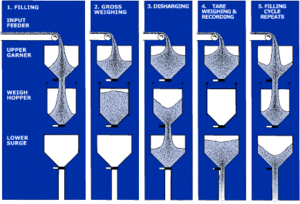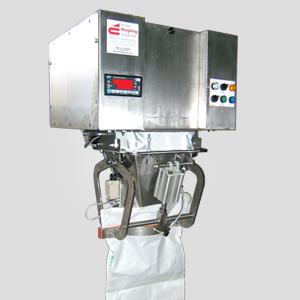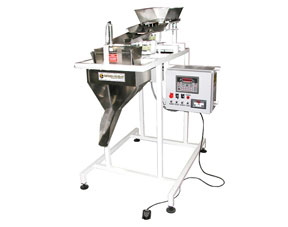Difference between revisions of "Gross Weighers"
Jump to navigation
Jump to search
| Line 8: | Line 8: | ||
* -------------------------------------------------></noinclude> | * -------------------------------------------------></noinclude> | ||
[[Gross | [[File:Bulk_weighers.gif|thumb|right|Gross Weigher placement]] | ||
==Compared to [Net Weighers]== | [[File:Gross_weigher1.jpg|thumb|right|Gross Weigher]] | ||
[[File:Gross_weigher2.jpg|thumb|right|Gross Weigher]] | |||
'''Gross Weighers''' are a type of weighting machines that weigh the Product in the bag. Note that most electronic weighing in the bag will tare the empty bag off and technically be a nett weigher. | |||
Net weight refers to the weight of the product alone, discounting the weight of its container or packaging | |||
==Compared to [[Net Weighers]]== | |||
*Low headroom. Discounting the height of the top surge hopper, a gross weigher and feeder can take up less than 2 metres of height (including the conveyor). | |||
*Lower cost.No weigh hopper is used and therefore less ancillaries / metal parts are required, reducing the cost. Slower than nett weighers. The next weighing cycle cannot start until a fresh bag is fitted into the clamps. Generally the speeds that can be achieved are up to 8 cycles per minute with good accuracy, depending on the material. For an application where accuracy is of less importance, higher speeds can be achieved, of up to 12 cycles per minute (may involve fast feed only). | |||
*Slightly less accurate. The operator can fit the bag at an angle, which will affect the inflight amount. The inflight amount of material is higher due to a longer drop between the feeder outlet and the bag. It is easy for the operator to tamper with the weigher parts during filling, which will affect cut-off and the subsequent inflight adjustment for the next weighing cycle. | |||
*Can be in a mobile format more easily than [[Net Weighers]]. | |||
Revision as of 08:11, 13 April 2012
Gross Weighers are a type of weighting machines that weigh the Product in the bag. Note that most electronic weighing in the bag will tare the empty bag off and technically be a nett weigher. Net weight refers to the weight of the product alone, discounting the weight of its container or packaging
Compared to Net Weighers
- Low headroom. Discounting the height of the top surge hopper, a gross weigher and feeder can take up less than 2 metres of height (including the conveyor).
- Lower cost.No weigh hopper is used and therefore less ancillaries / metal parts are required, reducing the cost. Slower than nett weighers. The next weighing cycle cannot start until a fresh bag is fitted into the clamps. Generally the speeds that can be achieved are up to 8 cycles per minute with good accuracy, depending on the material. For an application where accuracy is of less importance, higher speeds can be achieved, of up to 12 cycles per minute (may involve fast feed only).
- Slightly less accurate. The operator can fit the bag at an angle, which will affect the inflight amount. The inflight amount of material is higher due to a longer drop between the feeder outlet and the bag. It is easy for the operator to tamper with the weigher parts during filling, which will affect cut-off and the subsequent inflight adjustment for the next weighing cycle.
- Can be in a mobile format more easily than Net Weighers.


